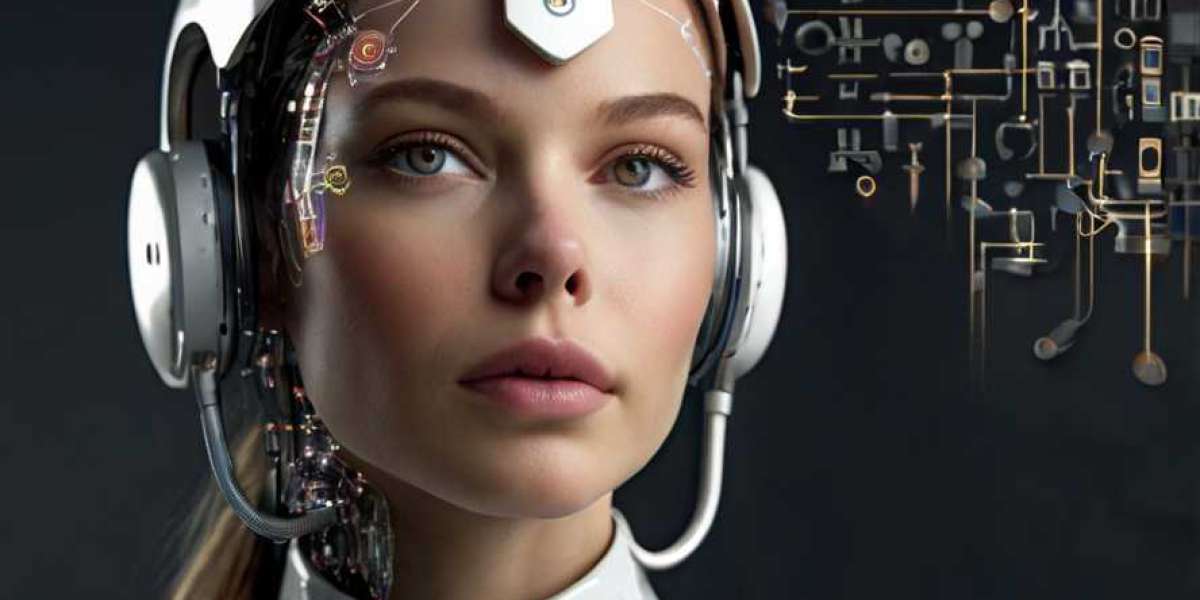Introduction
The advent of artificial intelligence (AI) has brought transformative changes across various sectors, fundamentally altering how we communicate, work, and think. One of the most significant advancements in AI is the development of language models, particularly OpenAI's Generative Pre-trained Transformer 3 (GPT-3). Launched in June 2020, GPT-3 is a powerful language model that can generate human-like text based on a given prompt. Its capabilities have drawn interest not only from technologists and researchers but also from educators, businesses, and content creators. This case study explores the impact of GPT-3 on various fields, including content generation, customer service, education, and ethical considerations surrounding AI language models.
Background of GPT-3
GPT-3 is the third iteration of the Generative Pre-trained Transformer series developed by OpenAI. At its core, the model is built on a neural network architecture called a transformer, which allows it to analyze and generate text based on a vast dataset. With 175 billion parameters, GPT-3 is distinguished by its ability to produce coherent and contextually relevant sentences, paragraphs, and even entire articles from simple prompts. Unlike its predecessor, GPT-2, which had 1.5 billion parameters, GPT-3's immense scale has significantly enhanced its performance, enabling it to handle a more extensive range of tasks.
Applications in Content Creation
One of the most notable applications of GPT-3 is in content generation. Businesses and individuals leverage the model to create written material, including articles, marketing copy, social media posts, and more. The automated content generation process not only saves time but also enhances creativity by providing diverse perspectives and ideas.
Case Example: Copy.ai
Copy.ai is a startup that utilizes GPT-3 to assist users in generating marketing content. By inputting keywords or phrases related to their business, users can receive multiple creative outputs generated by the AI. For instance, a small business owner may use the platform to produce catchy taglines or product descriptions without the need ChatGPT for research extensive copywriting experience. The tool enables users to iterate quickly, experiment with different styles, and optimize their content to better resonate with their target audience.
The immediate benefits for Copy.ai users are evident: improved productivity, access to a variety of writing styles, and reduced costs associated with hiring professional writers. However, while GPT-3 can produce convincing text, it requires human oversight to ensure quality and appropriateness, especially for sensitive brand messages.
Challenges
Despite these advantages, challenges remain. The quality of AI-generated content can be inconsistent, and there are concerns about originality, as the model learns from existing texts. As a result, businesses must scrutinize the generated content for potential issues of plagiarism or brand misalignment. Additionally, the reliance on AI for creative tasks raises questions about creativity and the role of human writers in the digital landscape.
Enhancing Customer Service
Another area where GPT-3 has made significant strides is customer service. Many businesses are integrating AI language models into their customer support systems to provide prompt responses to customer queries. This has proven particularly useful for handling high volumes of inquiries, especially during peak shopping seasons.
Case Example: Chatbots in E-Commerce
E-commerce platforms, such as Shopify, have begun employing GPT-3-powered chatbots to assist customers in real-time. By utilizing natural language processing (NLP), these chatbots can understand customer requests and provide relevant answers. For instance, if a customer asks about the status of their order, the chatbot can pull data from the order system and provide an immediate response.
The advantages of employing AI chatbots are manifold: they offer 24/7 support, reduce wait times, and lower operational costs for companies. According to a report by Juniper Research, chatbots are expected to save businesses over $8 billion annually by 2022, with a significant portion of those savings attributed to improved customer service efficiency.
Challenges
However, the implementation of AI-driven customer service is not without challenges. A significant concern is the potential for miscommunication, as chatbots may misinterpret customer requests or fail to address complex issues adequately. This can result in frustration for customers, who may prefer human interaction for more nuanced inquiries. Thus, businesses must find a delicate balance between automation and human touch to ensure optimal customer satisfaction.
Transforming Education
GPT-3's capabilities also extend to the field of education, where it is being utilized to develop personalized learning experiences and enhance engagement. The model's ability to generate text can be harnessed to assist students with a variety of tasks, from homework assistance to essay writing.
Case Example: Kuki Chatbot
In an educational context, the Kuki chatbot exemplifies how GPT-3 can be integrated into learning platforms. Positioned as a virtual tutor, Kuki can answer questions, explain concepts, and even generate additional resources based on a student's specific needs. For example, if a student struggles with a math problem, they can ask Kuki for step-by-step guidance, which the AI can provide in a clear and comprehensible manner.
Moreover, GPT-3 can help educators create tailored lesson plans or generate quizzes. Teachers can input a curriculum topic, and the AI can produce relevant exercises and assessments, enriching the educational experience for both students and instructors.
Challenges
Nevertheless, the integration of GPT-3 in education raises ethical concerns and highlights the need for critical thinking skills. A potential downside is the temptation for students to rely too heavily on AI-generated responses, hindering their learning process. Educational institutions must establish guidelines and frameworks that encourage responsible AI use, promoting active engagement rather than passive consumption.
Ethical Considerations
As with any powerful technology, the deployment of GPT-3 brings forth ethical considerations that merit attention. Key concerns include bias in AI outputs, misinformation, and the potential misuse of language models.
Bias in AI Outputs
AI models are only as good as the data they are trained on. If the training dataset contains biased information, the model may inadvertently produce biased outputs. For instance, GPT-3 has been found to generate text that reinforces stereotypes or exhibits gender or racial bias. OpenAI has acknowledged these limitations and is actively working to address bias through ongoing research and refinement of the model.
Misinformation and Misuse
The ease of generating text with GPT-3 raises concerns about the proliferation of misinformation. With the potential to create believable fake news articles, deceptive marketing materials, or fraudulent content, there is a danger that individuals might misuse the capabilities of GPT-3. OpenAI has implemented policies and usage guidelines to mitigate such risks, but the challenge of monitoring and regulating AI-generated content remains significant.
The Human-AI Relationship
Another ethical consideration involves the relationship between humans and AI. As AI becomes increasingly integrated into society, questions arise regarding authorship, creativity, and the role of human professionals. For instance, if a piece of writing is generated by GPT-3, who owns the copyright? Should AI-generated content be labeled as such to maintain transparency with consumers? Addressing these questions will be crucial as we navigate the evolving landscape of AI technology.
Conclusion
The introduction of GPT-3 has opened new frontiers in the way we create content, communicate, and learn. Its applications span various sectors, including marketing, customer service, and education, although challenges and ethical considerations remain. As we continue to explore the potential of AI language models, it is essential to strike a balance between harnessing their capabilities and addressing the ethical implications they present.
In navigating this complex terrain, collaboration among technologists, businesses, educators, and policymakers will be vital. By doing so, we can ensure that the integration of GPT-3 and similar technologies serves to enhance human creativity, improve productivity, and foster a more equitable and informed society. As we stand at the intersection of innovation and ethics, the future of AI holds tremendous promise, contingent on our willingness to engage critically with its implications.












